Why Bashing Evolution Isn’t Enough
To the average person, young-earth creationists are usually defined by their contempt of evolution and deep time. It is easy to see how this perception came about. We have spent countless books, Gospel tracts, website and journal articles, lectures, and even movies declaring that evolution is not true and that the earth is not billions of years old. The creation/evolution debate is a favorite topic of many involved in apologetics, and rightly so! The apostle Peter is quite clear that we should always be ready to defend our faith from objections (1 Peter 3:15). But is the sole purpose of creation science to win arguments against those who stand in opposition to Scripture?
It is not enough to point out the flaws of widely-held paradigms like the theory of evolution or deep time. Offering only criticism without alternatives will not lead creationists anywhere. Worse, it will present no solid ground for our contemporary colleagues to consider creationism seriously, either. Young-earth creationists need to develop a more robust understanding of the evidence and how it agrees with the Scriptures. We can then present an interpretation that explains the evidence even better than the theory of evolution and deep time. Good creation science could provide a more powerful foundation to those contemporary colleagues than apologetics alone.
But how do we go about doing this? What we need are good, scientific models.
What is a Scientific Model?
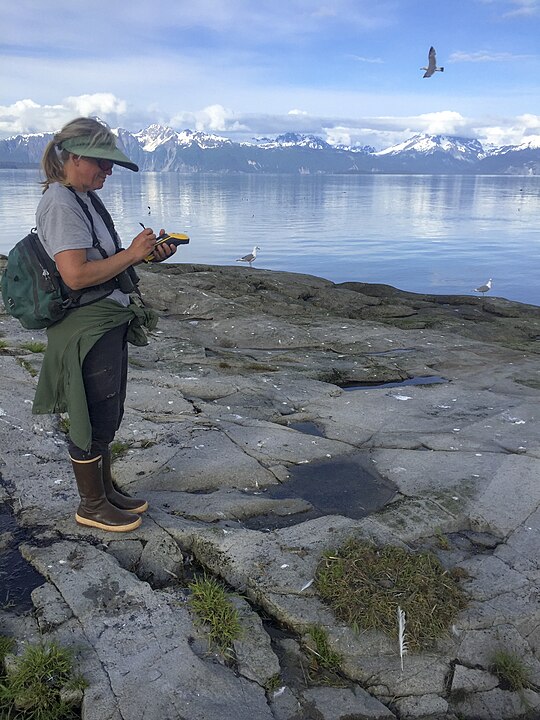
The universe glorifies its Maker (Psalm 19:1, Psalm 104:24-25), from the tiniest cell to the biggest galaxy. A better understanding of the Creation can give us a better understanding of the Creator Himself (Job 12:7-8, Romans 1:20). This poses a challenge. The universe is a complex system full of integrated relationships that rely on and impact each other. It is so complex, in fact, that the human mind can never hope to wholy comprehend it. So how are we to understand how the various aspects of the Creation work? One way scientists attempt to do this is by developing models.
A scientific model is a collection of observations, hypotheses, tested theories, and predictions. These serve as a framework by which we incorporate additional data gathered from a particular field.
Building a Better Model —Creation Style!
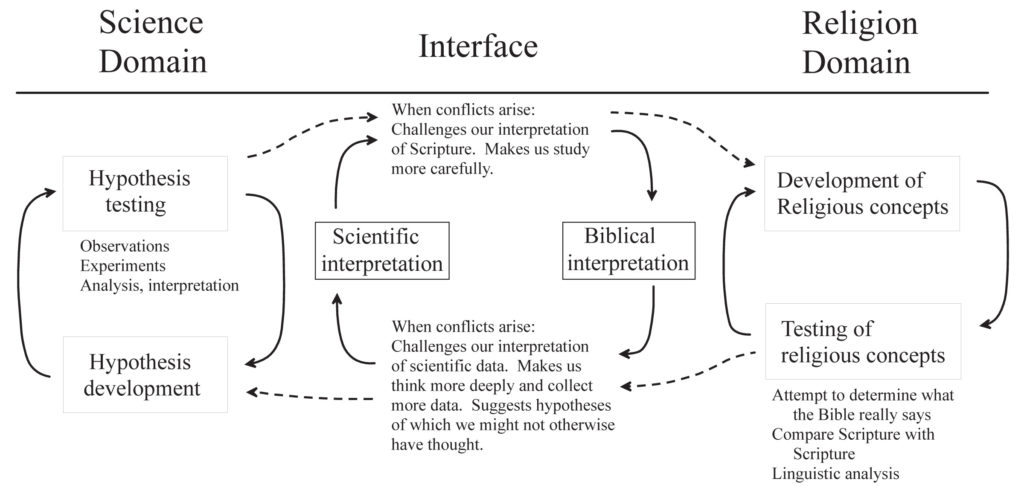
It is not merely enough for us to point out the flaws of conventional, unbiblical scientific models. Instead, we need more robust models that explain the same data conventional scientific models can explain, but better. This is where the biblical creationist researcher comes in. We have something conventional researchers do not: an eyewitness account of the earliest events of our planet’s history faithfully recorded in the first book of the Bible, Genesis. This gives us a great foundation!
A biblical model of earth history begins with the Bible. Genesis gives us a basic timeline and associated events (e.g. Creation, the Fall, Global Flood, etc). However, Scripture is not a science textbook and does not always provide us with the physical mechanisms behind those events. We must look at the data from the natural world and draw conclusions based on our observations. The diagram above depicts Dr. Leonard Brand’s proposed approach for the relationship between science, Scripture, and religion. As we can see, a good biblically-based model should be able to explain scientific data well and make testable predictions. (For more on Brand’s approach, read What Creation Research Looks Like.)
“All Models Are Wrong, But Some Are Useful”
In order to construct scientific models that are consistent with God’s revelation to us, we must acknowledge that the vast majority of scientists accept conventional scientific models as “settled science.” Does this mean that these models are correct by default? Not necessarily. This is the wrong way to think about scientific models. In fact, the history of science is riddled with incorrect scientific models. In their day, scientists not only considered these models “settled science,” but also used these models to explain huge swaths of data and make successful predictions later. All while being wrong! In fact, statistician George Box went so far as to famously state that “All models are wrong, but some are useful.”1 The reason why conventional scientific models are so widely-accepted is because they are useful, even if they are wrong.
Model 1: Plate Tectonics
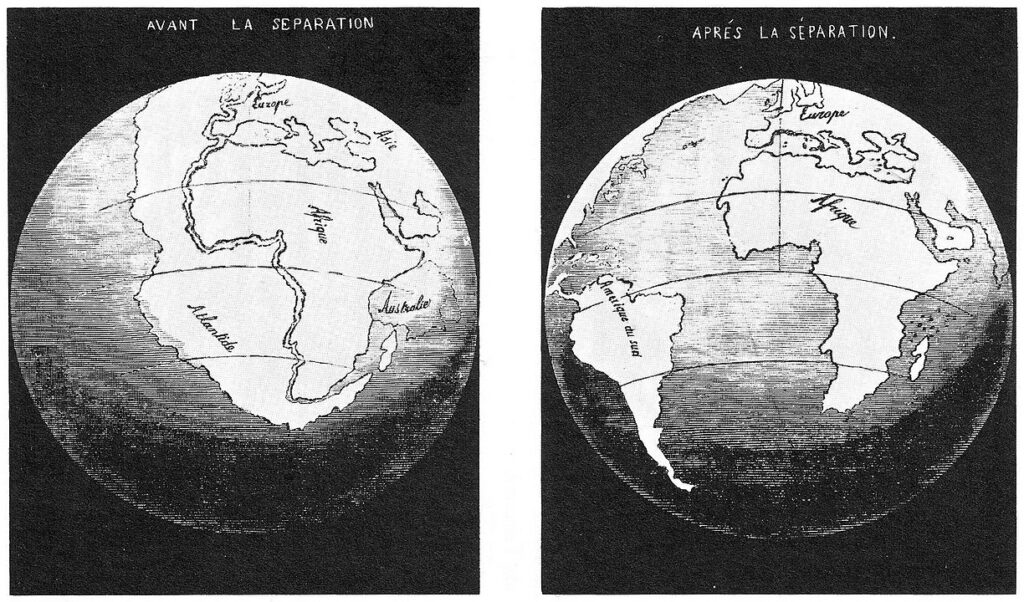
Over the centuries, geographers and cartographers have independently proposed that the continents were once together and broke apart at some point in history. Antonio Snider-Pellegrini is one such example. In 1858, he proposed that the continents broke apart during Noah’s Flood.2
Unfortunately, the idea of continental separation did not receive much attention until 1912, when a German scientist named Alfred Wegener proposed a scientific model called continental drift.3 He developed this to explain how the world’s seven continents resulted from the fracturing of a single supercontinent called Pangaea. There were many scientific observations that Wegener’s model explained well. For example, it explains why we find certain fossils of animals and plants on opposite sides of the Atlantic Ocean, but never in the Atlantic Ocean itself. Wegener’s answer to this riddle was simple. The fossils were buried and preserved when South America and Africa were still united at the time Pangaea existed.
Nonetheless, Wegener’s model faced rejection from the scientific community, and for valid reasons. His proposition that continents moved by plowing through the ocean floor contradicted the fundamental understanding that such an action would inevitably fracture the seafloor—an awareness that held true both then and continues today. Wegener also had no mechanism by which continents could move in the first place. Plain and simple, continental drift —as Wegener proposed it—was wrong. This does not mean Wegener’s continental drift idea was bad. Quite the contrary! It did what a good scientific model is supposed to do: explain the data and make testable predictions.
A good scientific model is supposed to explain the data and make testable predictions.
In fact, Wegener’s model was not completely wrong. Today, the idea of continental drift has been subsumed into a newer scientific model: plate tectonics. Like Wegener’s original idea, the concept of plate tectonics holds that the continents have moved significantly in the past. But the way in which they do this is different than Wegener thought. Sonar, satellite images, and submersibles have allowed us to better understand the nature of the ocean floor. And we now understand that the continents and ocean floor are broken up into large segments called “tectonic plates” that move relative to each other. Even though Wegener’s model was wrong in some aspects, he had the right idea in other aspects. Most importantly, it paved the way for the current plate tectonics model.
Model 2: Universal Common Ancestry
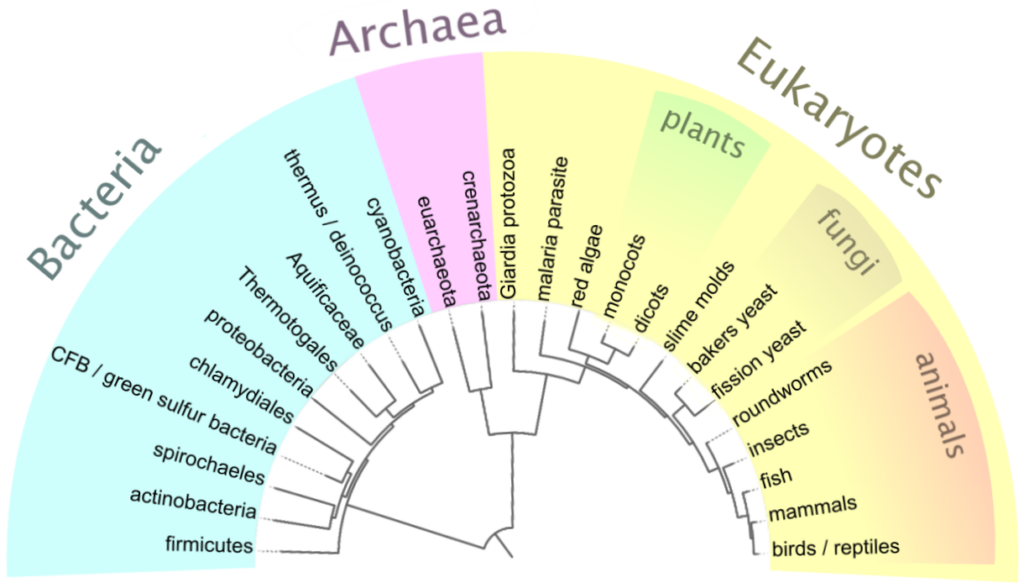
The Theory of Universal Common Ancestry (UCA) posits that all organisms diverged from a common ancestor through the process of evolution. According to this idea, all living things fall on the same family tree. Supposedly, people and bacteria are related if you look far enough back on this tree. Proponents of this theory claim that the common ancestor, a population of protocells, lived billions of years ago. Since then, they claim, these lineages have changed through the mechanism of evolution. Originally, this theory intended to exclude God and the record in the Bible from an explanation of the diversity of life.
Universal Common Ancestry explains lots of evidence from biology, genetics, the fossil record, and biogeography. We should not dismiss everything that it has to say. While wrong at its core, some of the mechanisms which it utilizes may be helpful in creationist models. In particular, natural selection and mutations may play an important role in the diversification of created kinds. God made the original created kinds, and through providence has allowed these “natural” processes to further shape them. So, we should think twice before we throw out the mechanisms of the UCA model entirely, and instead learn what useful insight they may contain.
What Does a Successful Creation Model Look Like?
We know that both plate tectonics and UCA, in their current form, are wrong. This is because all models are wrong! The ability of these models to explain vast swaths of data demonstrates that they are useful to science. As such they are probably not completely wrong. Rather, both models have certain aspects that are likely correct and certain aspects that are likely incorrect. Acknowledging the strength of these models does not necessitate accepting that they are absolutely correct in their current form. It also does not mean that alternative scientific models can not be considered, nor that one of these alternatives may be able to explain the data even better.
The great thing about building creation models is that the work has already begun! In fact, creation scientists have been at it for decades. Below, we will continue to explore our two examples and how they have been helpful in understanding scientific data, both in conventional and creation science.
A Model of Continental Plate Movement
Conventional Model: Plate Tectonics
The ability of plate tectonics to explain great swaths of data such as the distribution of fossils, the position of volcanoes, and the location and depth of earthquakes makes it a very useful scientific model. We can even use certain lines of evidence, like the arrangement of certain mountain ranges, to estimate what pre-Pangaean supercontinents may have looked like. However, young-earth creationists have reason to suspect that the conventional plate tectonics theory is not entirely correct because the data is not always consistent with it.
For example, it extrapolates the modern rate of continental movement into the past. Continents are currently moving at about the speed your fingernails are growing (1.5 cm/year). At this rate, it would take hundreds of millions of years for the continents to arrive at their current configuration. This is much too long for a young-earth timescale of just thousands of years. Another problem is the discovery of cold, oceanic plates submerged deep within the earth’s hot mantle (7232oF).4 These plates formed at the earth’s surface, so they should have melted by now if they had slowly sunk into the mantle over millions of years.
Creation Model: Catastrophic Plate Tectonics

In the 1990’s, a group of creation scientists proposed a new model that could explain the same data already covered by conventional plate tectonics, but also much more. This model is called Catastrophic Plate Tectonics (CPT).5 While CPT operates by largely the same mechanisms as regular plate tectonics, it postulates that the global Flood of Noah’s day caused the division and rapid movement of the tectonic plates.
By quickening the speed at which continental plate movements occurred, as suggested by the data presented above, the researchers behind CPT were also able to explain other phenomena. For example, since the temperature and density of tectonic plates can increase or decrease the volume of ocean basins, CPT provides a major source of water for the Flood by forcing the seawater in the ocean basins onto the continents. It also provides a mechanism for transporting and dumping thick packages of marine sediments onto the dry land. CPT also provides a mechanism for generating a brief Ice Age in the years following the Flood.
A few years later, one of the lead scientists of the Catastrophic Plate Tectonics project, Dr. John Baumgardner, demonstrated that such a phenomenon can be scientifically modeled, even when applying the laws of normal physics.6
What Does the Future Hold for Catastrophic Plate Tectonics?
Like any good scientific venture, CPT presents us with even more mysteries to solve. The processes that would have driven it should have also produced heat, and lots of it! Recent studies suggest that the heat produced by CPT would have been enough to boil all water in the oceans and melt the Earth’s crust 13 times over.7 Yet, seeing as life on planet Earth was preserved through the Flood, death by excessive heat did not occur. This unresolved mystery has been called the heat problem.
Nonetheless, the presence of the heat dilemma does not negate the body of data supporting the concept of CPT. It is worth recalling that there was a time not too long ago that it was “physically impossible” for the continents to move at all. As briefly outlined earlier, there exists substantial evidence indicating that continents shifted, doing so at a pace significantly greater than their current drift rates. This, in turn, implies that the quandary stems from a gap in our comprehension of cooling mechanisms that restrained Earth from attaining uninhabitable temperatures. In the future, creation scientists endeavoring in this field will strive to identify and elucidate potential cooling mechanisms capable of mitigating the vast amount of heat generated during the Flood, reducing it to a negligible fraction.
A Model of Biodiversity
Conventional Model: Universal Common Ancestry
Now let’s look at model building in a different aspect of creation science. On the one hand, God created humans, as well as various plants, swimming animals, flying animals, and land animals, according to their kinds from the very beginning. They did not evolve from a common ancestor. Even today, we see a great variety of living things throughout the natural world that are very different from each other.
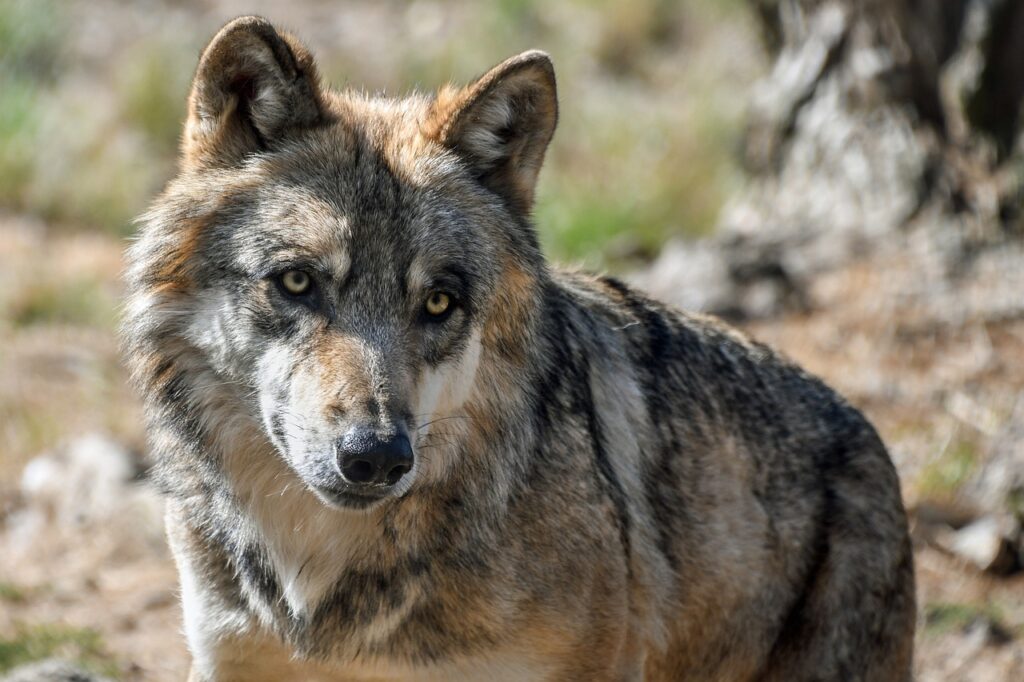
On the other hand, organisms do change over time, often to a great extent. Consider the diverse varieties of domestic dogs humankind has artificially bred from their ancestor, the wolf.8 Or consider observations of finch species populations on the Galapagos islands. Within as little as 40 years, we have witnessed significant changes to the size and shape of their beaks in response to shifting environmental conditions, and even the development of a new finch species.9 A good scientific model must be able to explain both of these trends.
Creation Model: The Refined Baramin Concept
To explain the trends described above, a group of young-earth biologists and paleontologists developed a model in 2003 called the Refined Baramin Concept.10 It builds upon the earlier work of biologist Frank Marsh which began in the 1930’s. The word “baramin” is roughly translated as “created kind” and is composed of two Hebrew words: bara (meaning “create”) and min (meaning “kind”). As such, a baramin refers to the lineage connecting the various life forms alive today and in the fossil record to their original ancestors God created in the beginning. Upon their creation, God encoded each baramin with the ability to adapt to their environment and diversify. Ultimately, the Refined Baramin Concept is useful for creation research because it can explain why some organisms (within a baramin) are especially similar to each other. It can also explain why some organisms (of different baramins) are especially dissimilar from each other.
The reality that organisms change over time need not inherently support common ancestry of all life. Rather, the ability for life to diversify is indicative of a good Designer who created living things to fill the earth and its specific niches.
What Does the Future Hold for the Refined Baramin Concept?
The Refined Baramin Concept poses an intriguing question: How did so much transformation happen so swiftly? To put it simply, many creatures we see today, like lions (Job 4:10-11; 10:16; 28:8; 38:39), domestic camels (Genesis 12:16), and donkeys (Genesis 12:16), were already around within the first few centuries or millennia following the Flood. This suggests that flying and land creatures must have undergone a rapid diversification shortly after disembarking from the Ark.
Young-earth biologists are actively studying this puzzle, and one idea put forward by Dr. Wood involves mobile genetic elements.11 These are pieces of the genome that can independently replicate and move around in an organism’s DNA. Mobile genetic elements can be envisioned as builders with a toolbox. They can flip switches on genes, make genes combine in new ways, and even shuffle complete genes from one place to another inside an organism. Today, we generally think of these mobile genetic elements as harmful parasites. However, it is possible that God originally designed them to cooperate with the genes of living organisms to generate diversity.
This capacity for genetic manipulation holds the potential to usher in significant transformations in an exceedingly short timespan. But, of course, researchers are still exploring this fascinating area of study.
Are These Models the Final Answer?
Catastrophic Plate Tectonics and the Refined Baramin concept are very good scientific models because they allow us to explain large swaths of data and make predictions about future findings. However, both models still have unresolved issues that will require more research to solve. How were the incredible amounts of heat that Catastrophic Plate Tectonics would have produced alleviated from the earth’s system? How did so many species descend from just a few thousand created kinds within just a few thousand years? These and other standing questions do not mean these models are failures. It means that while they have allowed us to make great progress, they are merely stepping stones on our stairway to truth. We as creation scientists march further into our quest for a better understanding of the Creator’s world.
The Future of Science is in Our Hands
Model building has proven time and time again to be an effective, forward-thinking way of moving creation research forward. While using data to demonstrate how aspects of the conventional model are incorrect can be a good thing, we should also use the data we gather to focus on the development of viable and comprehensive models.
“Whether or not a future Copernicus or Newton comes along to replace evolution with something better depends on us. If creationists content themselves with critiquing evolution, nothing will change (or if it does change, it will not be favorable to creationists). If instead creationists apply themselves to the development of new theories of creation, who knows what might happen?”
– Todd Wood12
Footnotes
- Box, George E. P. (1976). “Science and statistics.” Journal of the American Statistical Association, 71 (356): 791–799. ↩︎
- Antonio Snider-Pellegrini: La Création es ses mystères dévoilé. Paris 1858. ↩︎
- “Historical perspective [This Dynamic Earth, USGS]”. pubs.usgs.gov. Archived from the original on 27 July 2018. Retrieved 6 February 2024. ↩︎
- Baumgardner, John R. (2003) “Catastrophic Plate Tectonics: The Physics Behind the Genesis Flood,” Proceedings of the International Conference on Creationism: Vol. 5, Article 13, pg. 7. ↩︎
- Austin, Steven A., Baumgardner, John R., Humphreys, D. Russell, Snelling, Andrew A., Vardiman, Larry, and Wise, Kurt P. (1994). “Catastrophic Plate Tectonics: A Global Flood Model of Earth History,” Proceedings of the International Conference on Creationism: Vol. 3, Article 56. ↩︎
- Baumgardner, John R. (2003). “Catastrophic Plate Tectonics: The Physics Behind the Genesis Flood.” Proceedings of the International Conference on Creationism: Vol. 5, Article 13. ↩︎
- Worraker, W. (2018). “Heat Problems Associated with Genesis Flood Models—Part 1: Introduction and Thermal Boundary Conditions.” Answers Research Journal, 11, 171–191. ↩︎
- Drake, A.G, and Klingenburg, C.P. (2010). “Large-Scale Diversification of Skull Shape in Domestic Dogs: Disparity and Modularity.” The American Naturalist, vol. 175, no. 3. ↩︎
- Lamichhaney, S., Han, F., Webster, M.T., Andersson, L., Grant, B.R., and Grant P.R. (2018). “Rapid hybrid speciation in Darwin’s finches.” Science 359(6372):224–228. ↩︎
- Wood, T. C., Wise, K. P., Sanders, R., & Doran, N. (2003). “A refined baramin concept.” Occasional Papers of the BSG, 3, 1-14. ↩︎
- Wood, Todd Charles (2003). “Perspectives on Ageing: A Young-Earth Creation Diversification Model,” Proceedings of the International Conference on Creationism: Vol. 5, Article 36. ↩︎
- Wood, T. (2009). The Nature of Evidence [blog article]. Todd’s Blog. https://toddcwood.blogspot.com/2009/10/nature-of-evidence.html
↩︎

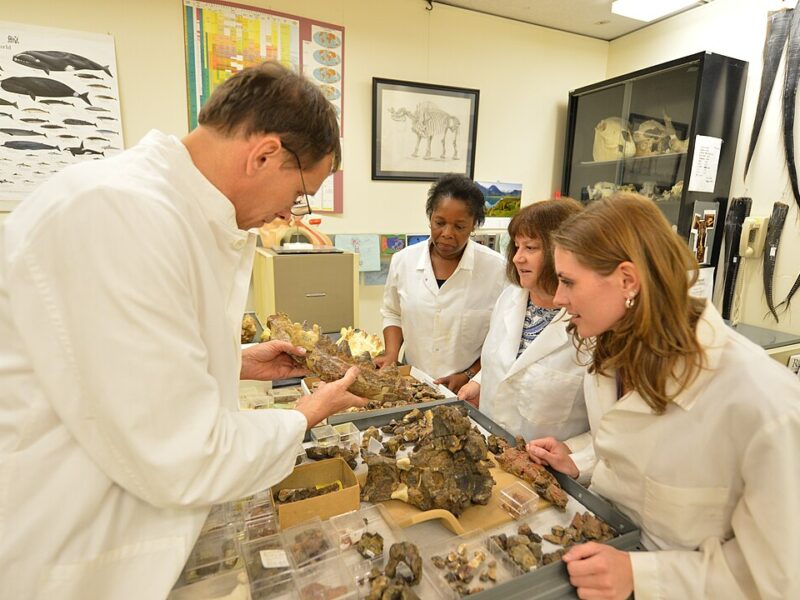



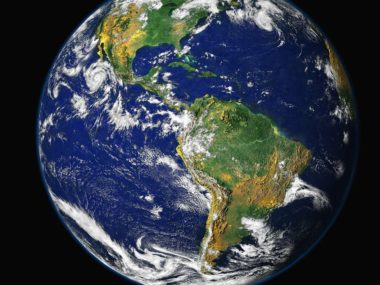

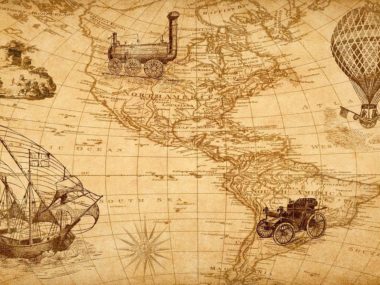




Good article. Is that picture at the top real people or actors as I am suspicious.
Our model is Genesis. Thats what we really defend against all comers. Yes we can make our models but we really should continue detroying the dumb ones the other side uses. Actually all innovation in science came from ideas unrelated to models. that came later to back up evidence.
Good article for creationists still.
There is one thing we must beware of when model building. Notice the words “physical mechanism” in this quote,“However, Scripture is not a science textbook and does not always provide us with the physical mechanisms behind those events. We must look at the data from the natural world and draw conclusions based on our observations.” We must make sure we are not trying to explain the physical mechanism with a model when in fact there was no physical mechanism, there was only the power of God. Our models must never inadvertently explain away the power of God. The Flood for instance was an act of God from the breaking of the fountains to the raising of the mountains.